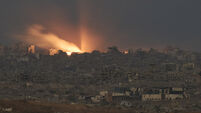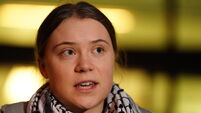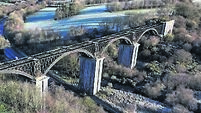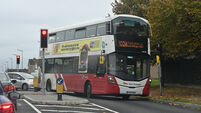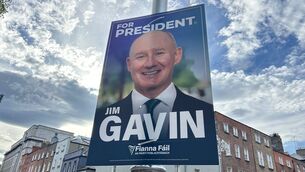Irish Examiner view: World peace is disappearing quickly over the event horizon

Iranian missiles being intercepted over the skies of Tel Aviv. Picture: AP
Every great city needs its own stately pleasure dome where dreams can be enjoyed, and life- replenishing interests and leisure indulged.
In Cork, that role has been fulfilled by the Opera House, whose 170-year contribution to the gaiety of the nation we mark in our Weekend magazine this morning. Corkonians have been lucky to have it, along with the Everyman Theatre which opened at Easter 1897.
Cork Opera House is celebrating all year, and so it should given its rich cultural contribution to the region and beyond, and the platform it has provided to local, national, and international talent.
The Opera House has always been a broad church. When its original iteration as The Athenaeum opened in 1855, it was for the “promotion of science, literature, and the fine arts, and the diffusion of architectural knowledge”.
Tastes change. It was renamed The Munster Hall before becoming the Opera House.
While on its present site it survived the Burning of Cork by British forces in 1920, it finally succumbed to the flames in its centenary year of 1955 during a pantomime rehearsal.
Even in its death throes, thousands turned out to watch the performance with gardaí called in to control the crowds.
The new Opera House rose from the ashes and as we enjoy its contemporary offerings, we can pay tribute to the shades of the past who were drawn to entertain us — Harry Lauder, Charles Dickens, the D’Oyly Carte opera company with their famous production of , Sarah Bernhardt, Ernest Shackleton, Jack Doyle — The Gorgeous Gael — Ella Fitzgerald, and, to bring it right up to date, Cillian Murphy. Thank you, Opera House, and all who have graced it.
There are many reasons why buying an SUV might be considered a contentious purchase.
Their weight and consequential impact on road surfaces is one.
Fuel consumption could be another in an era where it’s widely recognised that reducing carbon gases is a desirable objective for the good of society.
Then there’s the amount of space they can take up, particularly in car parks which were designed at the end of the last century.
Or the visual obstruction they present when a driver is attempting to assess whether to overtake.
If none of this cuts any ice with Irish motorists, and all the purchasing evidence suggests that it doesn’t, then what about considering a comprehensive report which concludes that the relentlessly rising bonnet height of new cars is a “clear and growing threat to public safety, especially for children”.
The report, by lobbyists Transport & Environment (T&E), said the average bonnet height of new cars in Europe rose from 77cm in 2010 to 84cm last year.
A Belgian study of 300,000 casualties concluded that a 10cm increase from 80cm to 90cm raised the risk of death in a crash by 27% for pedestrians and cyclists.
Children were substantially more likely to be killed as pedestrians in collisions than adults.
T&E also commissioned Loughborough University’s school of design to test the visibility of children from high-fronted cars.
The driver of a Ram TRX was unable to see children aged up to nine who were standing directly in front, while a Land Rover Defender driver could not see children aged up to four and a half.
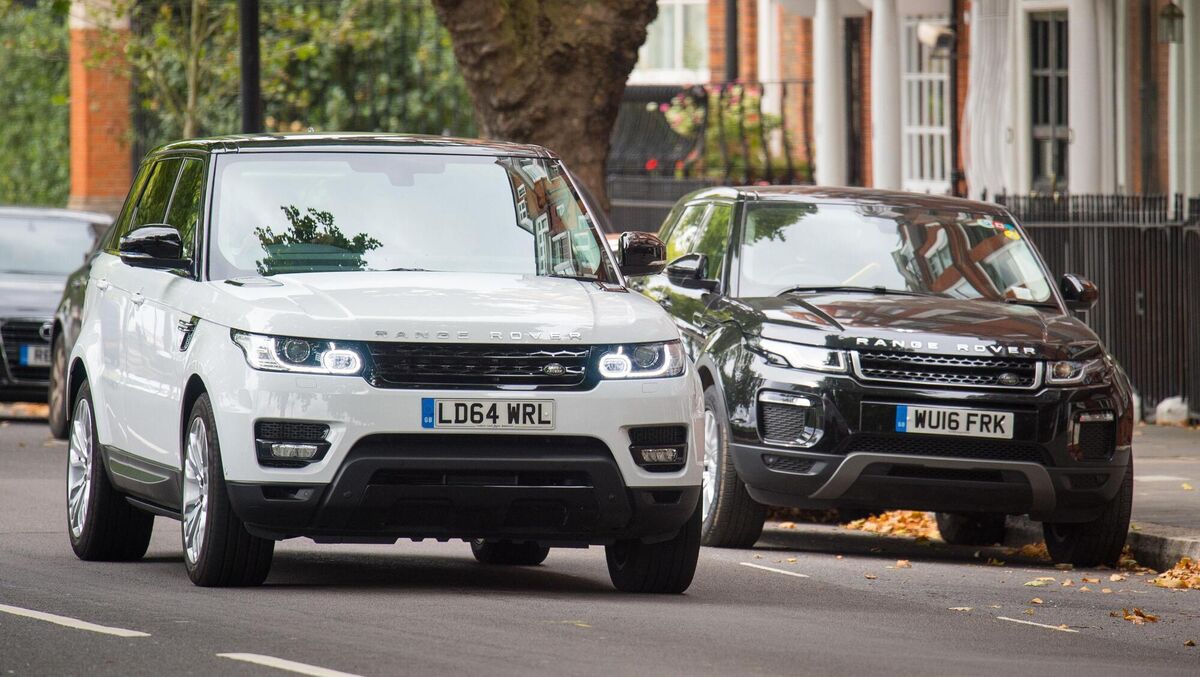
In collisions with pedestrians, high-bonneted vehicles are more likely to strike vital core organs in the bodies of adults and the heads of children. Lower bonnets tend to hit legs.
In Europe, there is no legal limit to bonnet height, and researchers argue that one should be introduced by 2035 and set no higher than 85cm.
The campaign against SUVs shows no sign of abating.
Paris and Lyon in France, and Aachen in Germany, charge bigger cars more to park.
In Britain, Cardiff, Bristol, Oxford, and Haringey are considering similar measures and last week the London Assembly called for limits on bonnet height.
The International Energy Agency reported record global SUV sales in 2024 and record SUV CO2 emissions of 1bn tonnes.
If SUVs were a country, they would rank as the fifth most polluting in the world, the IEA said.
In Ireland, as many SUVs, which have their design inspiration in rugged terrain vehicles, are sold to urban and city dwellers as to people who live in rural locations.
In other words, it is often a style choice.
Like deliveries by drone and the establishment of large power-hungry and water-hungry data centres, it is a commercial development whose consequences have not been fully thought through.




